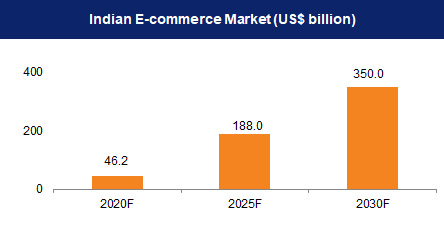As per India Brand Equity Foundation (IBEF), In recent years India has experienced a boom in internet and smartphone penetration. The number of internet connections in 2021 increased significantly to 830 million, driven by the ‘Digital India’ programme. Out of the total internet connections, ~55% of connections were in urban areas, of which 97% of connections were wireless. The smartphone base has also increased significantly and is expected to reach 1 billion by 2026. This has helped India’s digital sector and it is expected to reach US$ 1 trillion by 2030. This rapid rise in internet users and smartphone penetration coupled with rising incomes has assisted the growth of India’s e-commerce sector. India’s e-commerce sector has transformed the way business is done in India and has opened up various segments of commerce ranging from business-to-business (B2B), direct-to-consumer (D2C), consumer-to-consumer (C2C) and consumer-to-business (C2B). Major segments such as D2C and B2B have experienced immense growth in recent years. India’s D2C market is expected to reach US$ 60 billion by FY27. The overall e-commerce market is also expected to reach US$ 350 billion by 2030, and will experience 21.5% growth in 2022 and reach US$ 74.8 billion.



